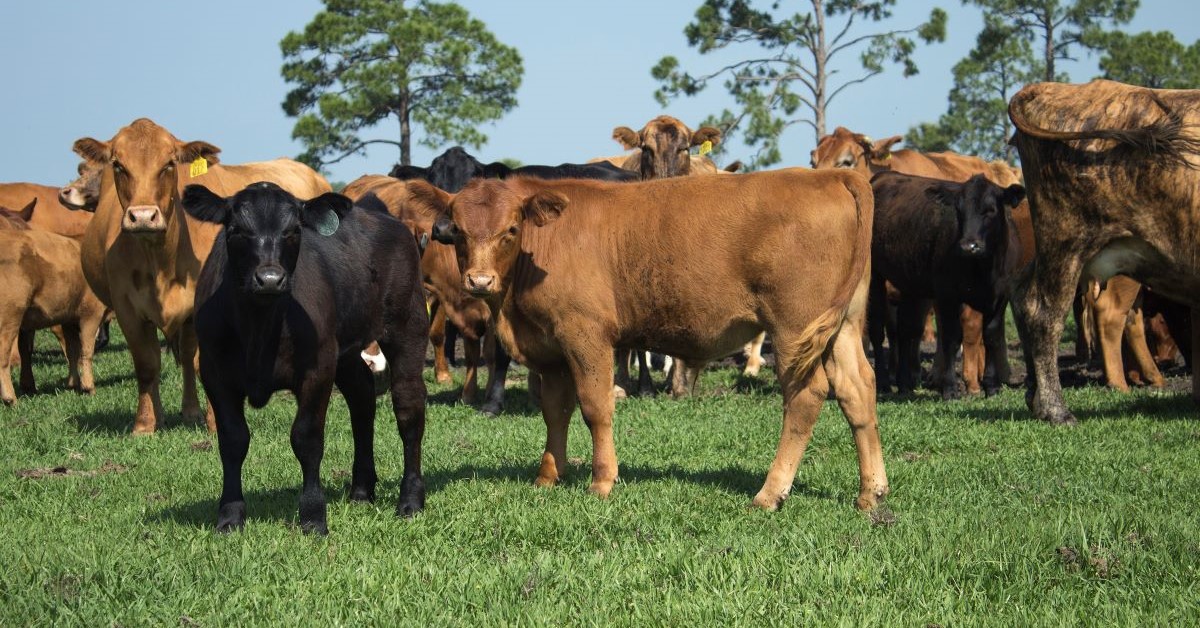
By: Nevil Speer, MBA, Ph.D.
Have you ever considered weaning and backgrounding your calves, but just never got around to actually doing it? If so, this is the year to make it happen. That’s because both the cattle market and feed prices are set up to work in your favor. Everything that follows is meant to be a quick overview of how that might look in practice.
We’ll start with the cattle. Obviously, markets vary across regions, but for this exercise, we’ll start with a 500-lb. steer calf and conservatively establish the initial value at $425/cwt (or ~$2100/head). Meanwhile, the objective will be to sell an 800-lb. steer next spring. Just to keep it simple, we’ll shoot for a 150-day backgrounding period with the calves gaining 2 lb./day. And given that, we’ll mark the future value using the April feeder cattle contract; it’s priced today around ~$335/cwt or $2680/head.
Therefore, there’s an opportunity to add approximately $580 of potential revenue to the operation by keeping the calves home.
Of course, that doesn’t come for free. Next, we need to consider the cost side of those 300 pounds. None of what happens needs to be complicated. On average, across 150 days, the calves will consume ~10 lb. of high-quality grass hay and 5 lb. of Blueprint® Starter 2 per day, respectively. The daily cost would total $1.50/day. That’s equivalent to a total feed cost of $225/head for 150 days (equivalent to a 75¢ cost of gain).
After accounting for feed costs, the remaining margin equals $355.
From there, the operation also needs to account for vet/medicine costs and pencil in some potential for death loss (call it ~1.5%). Again, to err on the careful side of forecasting, we’ll peg those costs at $35/head for each component, respectively (total of $70/head).
After accounting for vet costs and death loss, the remaining margin equals $285.
The other major items to consider are labor and assignment of some fixed costs. That varies widely from operation to operation. But whatever it might be — dictated by each operation — there’ll definitely be plenty of margin available when all is said and done.
Of course, the biggest fear of most producers is the market itself. That is, what happens if the market goes down (dramatically) between “now” and “then”? Wouldn’t I simply be better selling “now” and letting someone else assume that risk? There are several available venues to forgo that risk. For most operations, the best approach is to use tools which enable setting a price floor while allowing the opportunity to take advantage of upside potential.
There are two distinct ways of doing that: purchasing either put options or the USDA’s Livestock Risk Protection (LRP). Neither requires margin calls along the way. Generally, producers find LRP the more simplistic approach, and the program allows the luxury of not having to pay the premium until the expiration date. Either way, there will be additional costs associated with obtaining some risk protection, but it also provides the opportunity to protect your margin opportunity. And best of all, it lets you sleep a little better at night.
The business is providing a favorable opening for producers. Substantial dividends tied to backgrounding the calf crop are available. The example above is provided to be a simplified illustration. Clearly, that looks a little different with each individual operation and its respective resources and capabilities. But however that shakes out, the intent here is to encourage producers to explore new opportunities during this unprecedented time in the business.
- Log in to post comments
